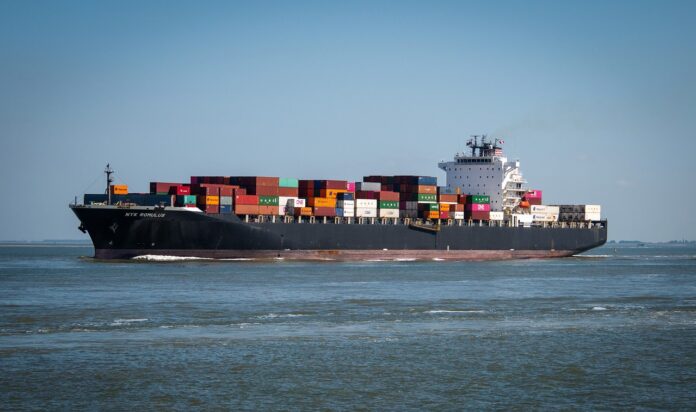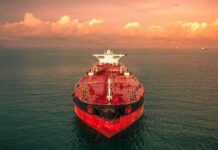
In today’s global economy, container shipping is essential to the functioning of numerous supply chains. Efficiently moving goods across oceans is essential to every industry, from food to automobiles. The construction industry, in particular, relies heavily on container shipping to obtain materials for manufacturing and ensure essential components are available for construction projects throughout the world.
For businesses that rely on building supplies, equipment, and parts container shipping is the backbone of their supply chain. Like every complex system, the construction supply chain has its own set of challenges. With an importance on how it impacts the shipping of construction equipment components and how suppliers handle these difficulties, this article will explore the crucial role that container shipping plays in global supply chains across the world.
The Role of Container Shipping as the Foundation of Global Supply Chains
The main means of moving commodities around the globe is container shipper, which links ports from Asia, the Americas, Europe, and Africa all together. It is a dependable and economical method of transporting large amounts and heavy loads across long distances. The container itself revolutionized trade, allowing for standardized shipping that’s easy to load, unload, and transport.
International shipping is nothing new to the construction supply chain. Parts for heavy machinery and equipment are frequently shipped from all around the globe. Container transportation enables the trade of goods to suppliers and construction sites around the world, whether they are steel components from Asia countries or high-tech engines from European countries.
Container transportation is crucial for suppliers of construction equipment and parts. Without it, components would be delayed, causing projects to come to a standstill. The components would also have much higher costs if they could not be sourced from other parts of the world. As a result, the smooth operation of ports and freight lines is crucial to ensuring that construction equipment is available when and where it is needed.
For example, companies like OntracParts, which specialize in providing quality rubber skid steer tracks and other construction equipment components, rely heavily on international shipping to meet the growing demand for these parts across the United States. Shipping solutions are crucial for ensuring that parts are delivered efficiently and on time to keep construction projects on track.
Challenges in Ocean Freight – A Focus on Construction Equipment Parts
While container shipping is essential, it has its own challenges. As suppliers of construction equipment parts are well aware of the number of challenges ocean freight may cause delays of essential parts needed for the equipment supply chain.
- Port Congestion
Port congestion is one of the most common challenges, which often leads to long delays and possible unexpected surcharges. Busy ports around the world, especially those handling heavy or oversized cargo, can develop bottlenecks when they handle large and heavy cargo in bulk. This is particularly problematic for the construction industry, as timely delivery of machinery parts is essential to prevent project delays. - Customs & Regulations
Another difficulty is the intricacies of global laws and traditions. Tariffs, product classifications, and documentation requirements differ between nations. These rules can slow down shipments for suppliers of parts for construction equipment, and if local laws are broken, they may result in extra expenses. - Obstacles in Logistics
Certain construction components are more difficult to import because they are heavy, bulky, and hard to store due to size. Special handling is more costly and complex but is necessary for pieces of equipment and sometimes the parts. Furthermore, it can be difficult to choose the best flat rack or container for moving big machinery. - Risk Management
Managing the risk of damage or theft during transportation is another critical concern. Parts for construction equipment are often expensive. Any damage to them can result in costly delays for a replacement. Insurance and incident protection plans are essential for mitigating these risks.
Overcoming These Obstacles: How Suppliers of Equipment Parts Adjust
By focusing on important tactics to overcome those challenges, importers have been able to adjust to these difficulties by:
- Partnerships with Freight Firms
Prioritizing construction parts items with collaboration through dependable freight partners can help cut down delays and improve dependability. - Technology Solutions
Digital systems that provide Real-time tracking and platforms that allow suppliers to monitor shipments closely, enabling them to respond quickly if issues arise. - Alternative Solutions
Some importers use air freight for important and urgent parts when ocean shipping delays are expected. Air freight offers a quick alternative compared to ocean freight. But comes with much higher costs, and in some cases not available for construction equipment due to the weight or sizes of parts.
The Future of Container Shipping and Its Impact on Construction Equipment Parts
The future of container shipping is evolving rapidly, and the construction industry stands to benefit from many of these changes.
Sustainability Trends
Reducing negative effects on the environment while shipping is becoming more and more important. Increasing the number of green shipping corridors, designed to give priority to more eco-friendly ships, is increasing. This gives container companies that prioritize environmental impact an advantage with quicker shipping routes. This could result in more environmentally friendly methods of moving parts for producers of construction equipment, which would be in line with the growing need for sustainable building methods.
Automation & Innovation
Ports are having less delays and quicker processing times due to the implementation of automation technology. Self-driving trucks, automated cranes, and digital reservation systems have the potential to transform the way containers are transported between port areas. This would cut down time on waiting for unloading and enhance the effectiveness of global supply chains.
What’s Next for Construction Equipment
The techniques for sourcing and importing construction equipment and parts will change along with the shipping sector as technology improves the supply chains. For building projects worldwide, the growing emphasis on sustainability, innovation, and digitalization will improve supply chain reliability, cut costs, and streamline operations.
Conclusion
Container shipping is essential for industries like construction, which rely on timely deliveries of equipment parts. While challenges such as port congestion and customs regulations can slow shipments, solutions like technology and strong freight partnerships help keep things on track.
Looking ahead, innovations like green shipping corridors and automation will further streamline the process. Companies like OntracParts, providing key components such as skid steer tracks, will continue to benefit from these advancements, ensuring timely deliveries for construction projects worldwide.





